I've Played Both World-Class Links And Delightful Hidden Secrets Along Ireland's Wild Atlantic Way...
Kevin Markham highlights the golfing adventure that is west Ireland's spectacular Wild Atlantic Way


When the Wild Atlantic Way was launched in 2014, it became one of the best driving routes in the world, overnight. It stretches for 1,500 miles from the Inishowen Peninsula, in Co. Donegal, deep into Co. Cork. It is a road made for tourism, leading to beaches, castles, clifftops, quaint villages, bustling towns and Ireland’s 40 shades of green.
What didn’t figure so prominently was that this is also one of the world’s best golf routes. There are 53 courses, including Ballybunion, Waterville, Carne, Old Head, Co. Sligo and St. Patrick’s, to name a few, as well as lesser-known courses that embrace the heart and soul – and beauty – of Irish golf.
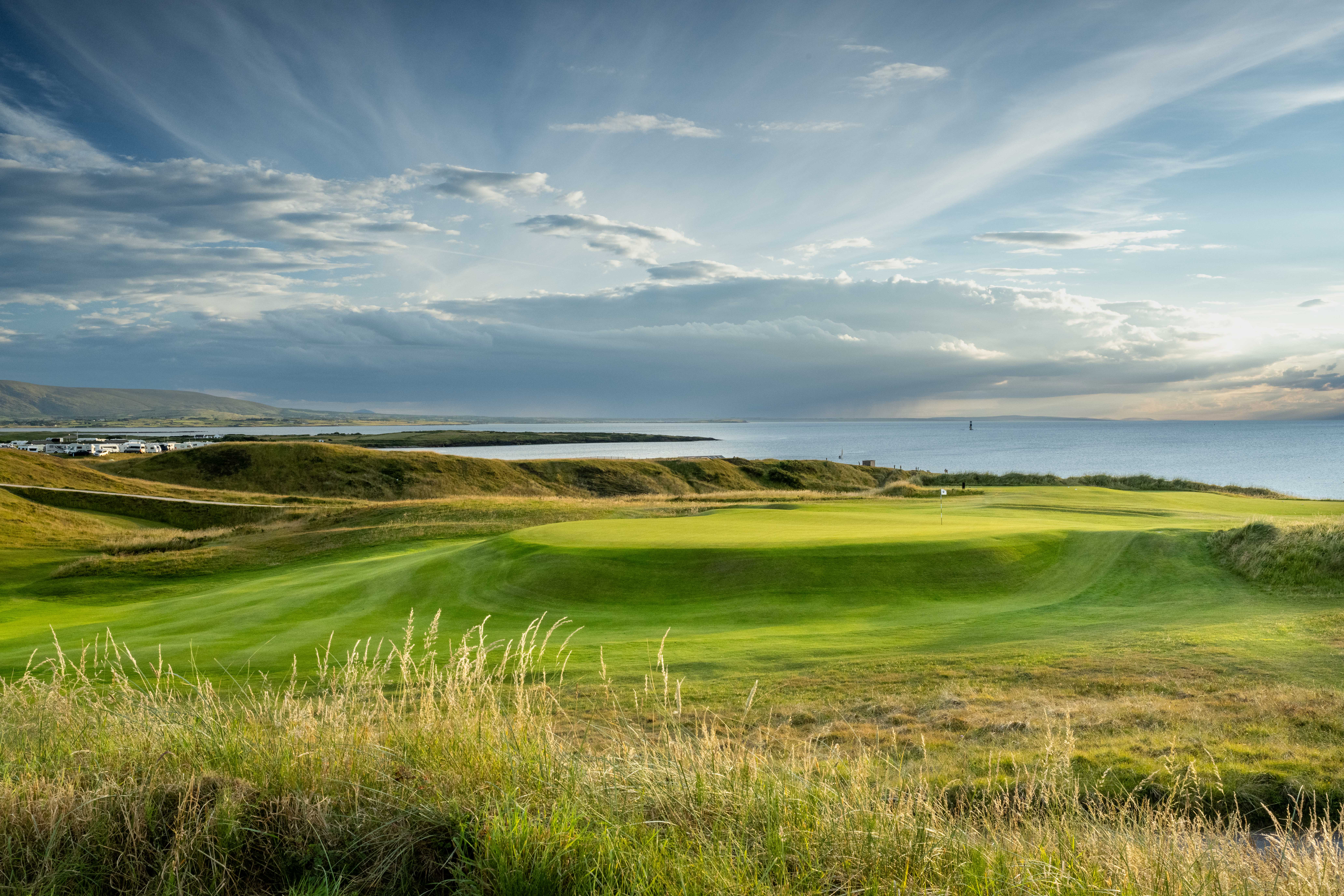
The 4th green on the Harry Colt links at County Sligo
No one expects you to tackle the route in a single go. It is something to be experienced over several visits, especially as there are brilliant courses to the very north – Ballyliffin is just 15 miles from the most northerly tip of Malin Head – and the very south, where Old Head dangles off the coastline like an emerald above raging ocean.
You must cherry-pick the hotspots and while every course cannot be covered here, some of the following recommendations, going from south to north, may swing your decision.
County Cork
Surprisingly, there are no true links in the county, but the clifftop extravaganza of Old Head of Kinsale more than compensates. The course is world-renowned and it promises a unique experience of astounding views, perfect conditioning and moments that take you to the cliffs poised 300 feet above the Atlantic.
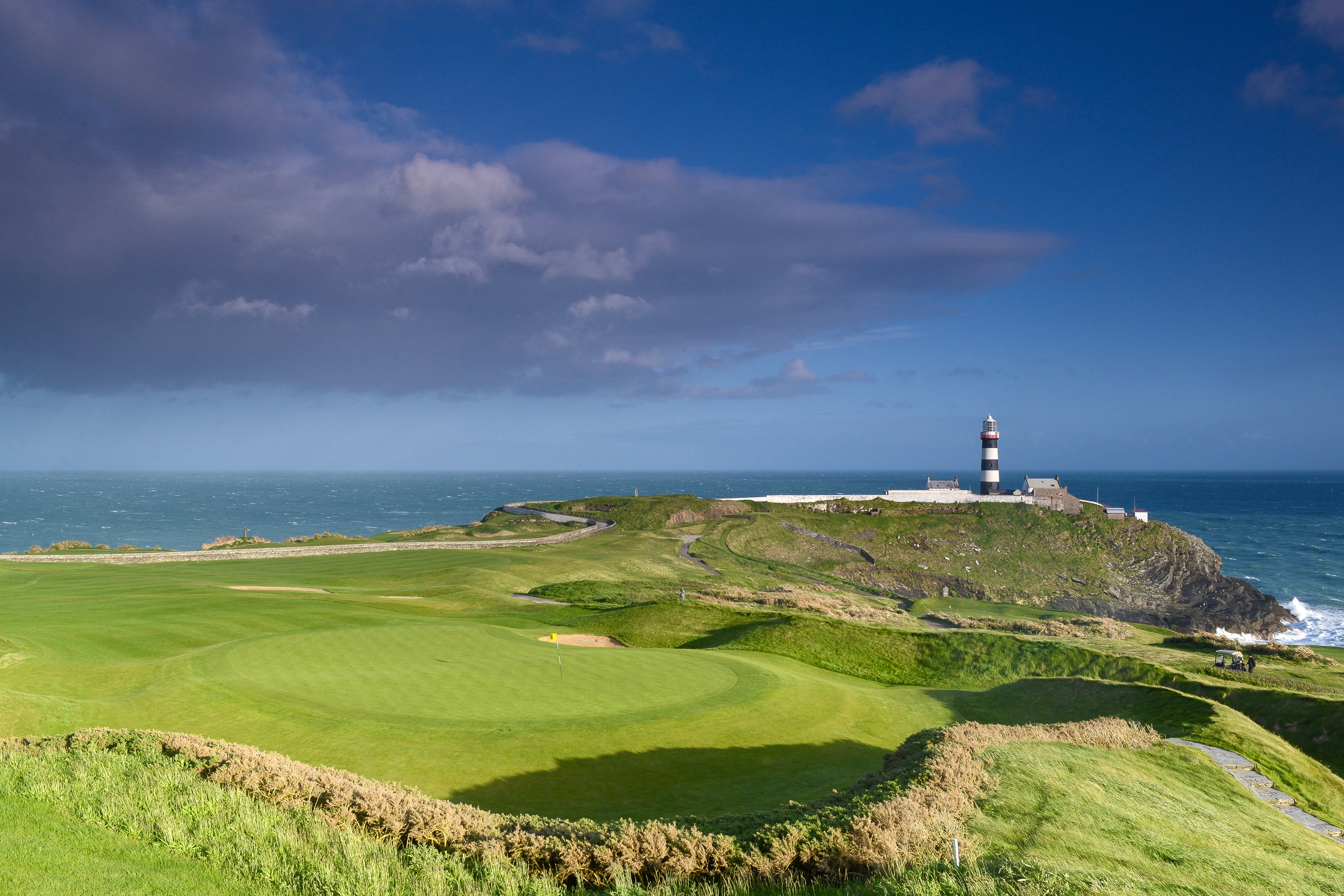
There can be few more dramatic courses anywhere than County Cork's Old Head
Nine greens cling to those clifftops but few holes anywhere can be as dramatic as the par-4 4th – aptly named Razor’s Edge – which heads out to the lighthouse at the point of the peninsula, dancing along the edge of the cliffs. Or the par-5 12th, where you must drive over a yawning chasm to find fairway.
Kinsale is one of Ireland’s food capitals and it is well worth factoring into your stay.
Get the Golf Monthly Newsletter
Subscribe to the Golf Monthly newsletter to stay up to date with all the latest tour news, equipment news, reviews, head-to-heads and buyer’s guides from our team of experienced experts.
The route then leads into West Cork and a string of peninsulas wrapped around beautiful bays. Here you’ll find the 9-hole parkland of Glengarriff, which has strong ties to Maureen O’Hara, of The Quiet Man fame. She lived nearby for 45 years. Views spill over Glengarriff Harbour and the surrounding mountains, with the ancient oak forests embellishing the course’s hillside thrills.
County Kerry
Kerry is known as The Kingdom. It is an apt description given that your choice of golf courses is one fit for a king, with Ballybunion, Tralee and Waterville among the world’s most famous links. This Kerry coastline is home to 12 courses in all, while the nearby town of Killarney throws in the 36-hole parkland paradise of Killarney Golf Club. You could stay at any of the town’s hotels and be within striking distance of the county’s courses.
The might of the MacGillycuddy’s Reeks rises above Killarney and stretches down the Iveragh Peninsula (also known as the Ring of Kerry), towards Waterville at the western tip. The links at Dooks, just 20 miles away, may well have bragging rights to possessing the most beautiful views of any course in Ireland… but it is a title fought over by half a dozen courses on the Wild Atlantic Way.
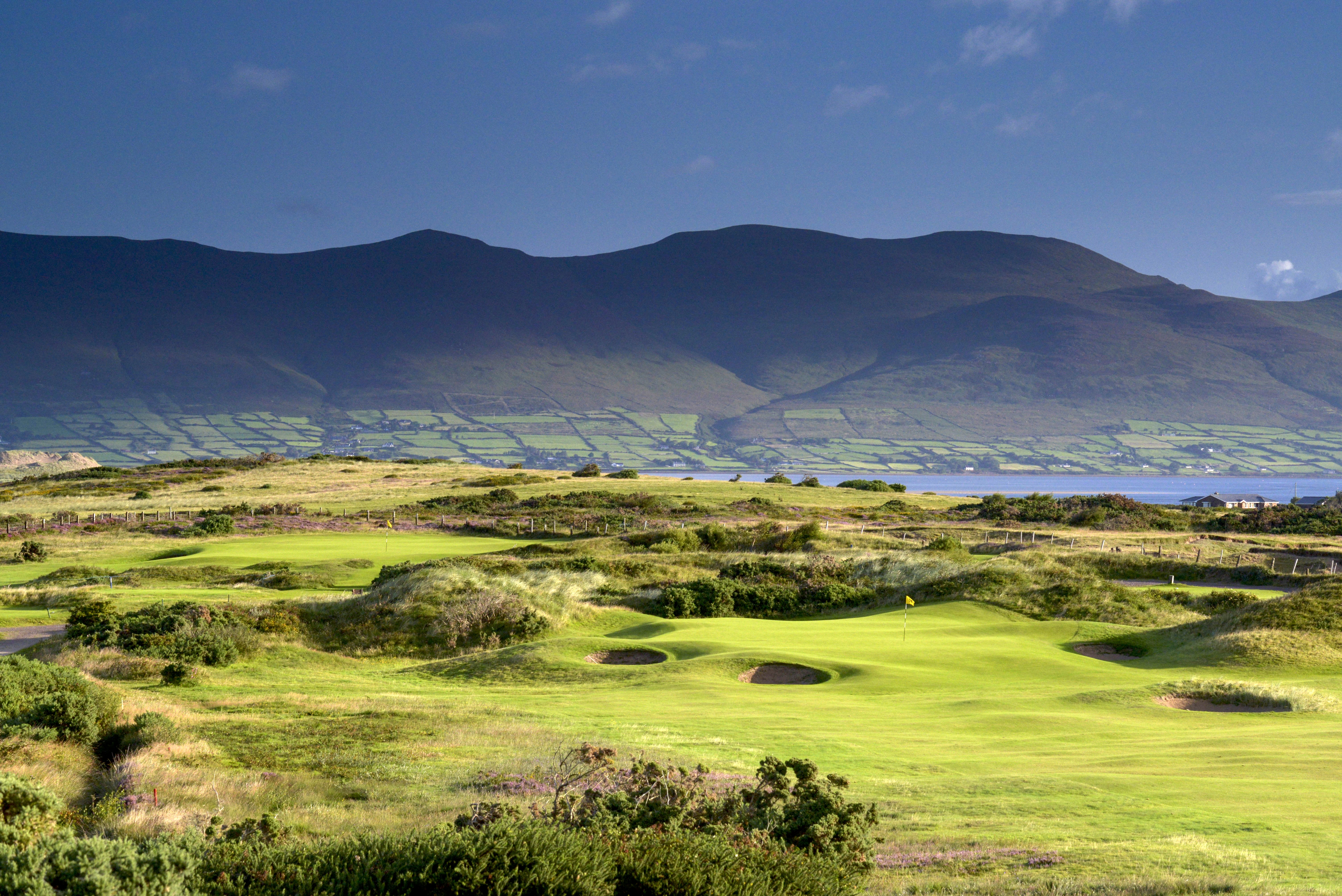
There's a real majesty to the setting and backdrops at Dooks
The next peninsula north is the Dingle Peninsula, with the cunning, low-lying Dingle Links at the far end. It is the most westerly golf course in Europe, and it has an exposed beauty designed to tease. A burn comes in to play on 11 holes and it will influence your strategy all day long. On the slopes above the clubhouse, the 190-yard 10th is ranked one of the toughest par 3s in Ireland.
As you drive along the peninsula’s southern shore you will pass the village of Inch. A vast sand spit of dunes barges out into the bay for three miles. There were once plans to build two links courses here, with one to be designed by Tom Doak.
By coincidence, on the opposite side of the peninsula, next to the punchy nine-hole Castlegregory links, there were plans to build two more. All fell foul of planning… and ambition.
County Clare
In terms of tourism, Clare is renowned for three things: the Cliffs of Moher; the fissured limestone wonderland that is the Burren; and the surfing paradise of Lahinch. Wet-suited surfing dudes don’t go hand-in-hand with plus-fours-wearing golfers, but there is an easy peace and each group can watch the other as the magnificent Lahinch hugs the beach, north of the town.
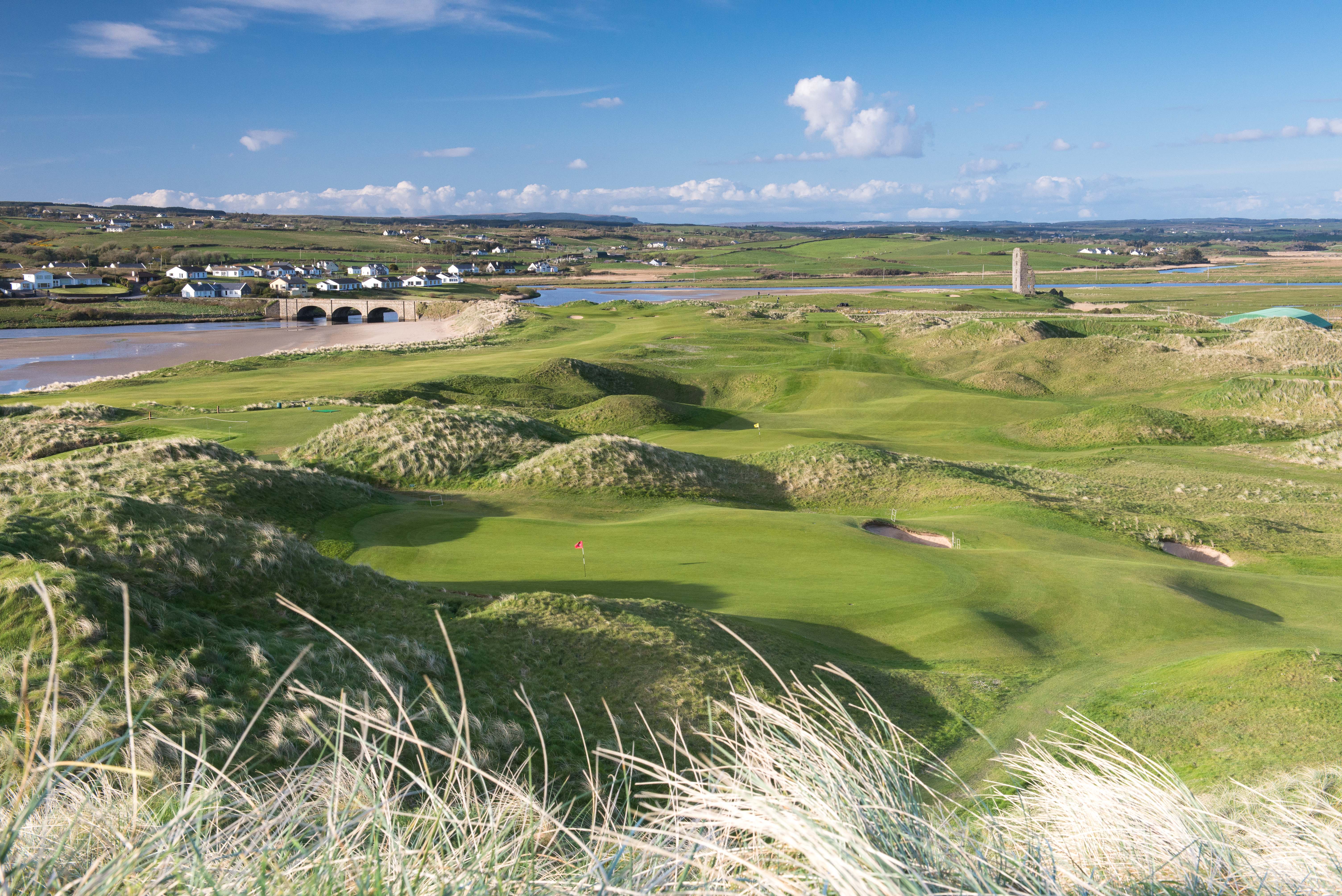
Lahinch is home to the famous Old course and lesser-known Castle course
There are iconic holes aplenty here – none more so than Klondyke and The Dell, designed by Old Tom Morris – and it is such a bucket-list course that most golfers don’t even know that Lahinch has a second links (Castle) across the road. Doonbeg, owned by the current President of the United States, lies to the south of Lahinch, and is a spectacular links in its own right.
In an intriguing twist, the dunes that are home to Doonbeg were once chosen as the location for Lahinch Golf Club, back in the 1890s. The location of the town’s train station swung it in favour of the site used today.
County Galway
The town of Galway dominates this county, but there are miles of coastline that lead westwards through the Connemara National Park and then north to Co. Mayo. There are four courses directly on the route, with Galway Bay Golf Club, just south of the city, having water on three sides. It is a beautifully manicured seaside parkland that takes you close to the water on both nines.
As you head west from the city, towards the 27 links holes of Connemara Golf Club, and the site where Alcock and Brown landed after the first non-stop transatlantic flight in 1919, you should prepare for some narrow roads – boreens – as you go in search of the 9-hole adventure that is Connemara Isles.
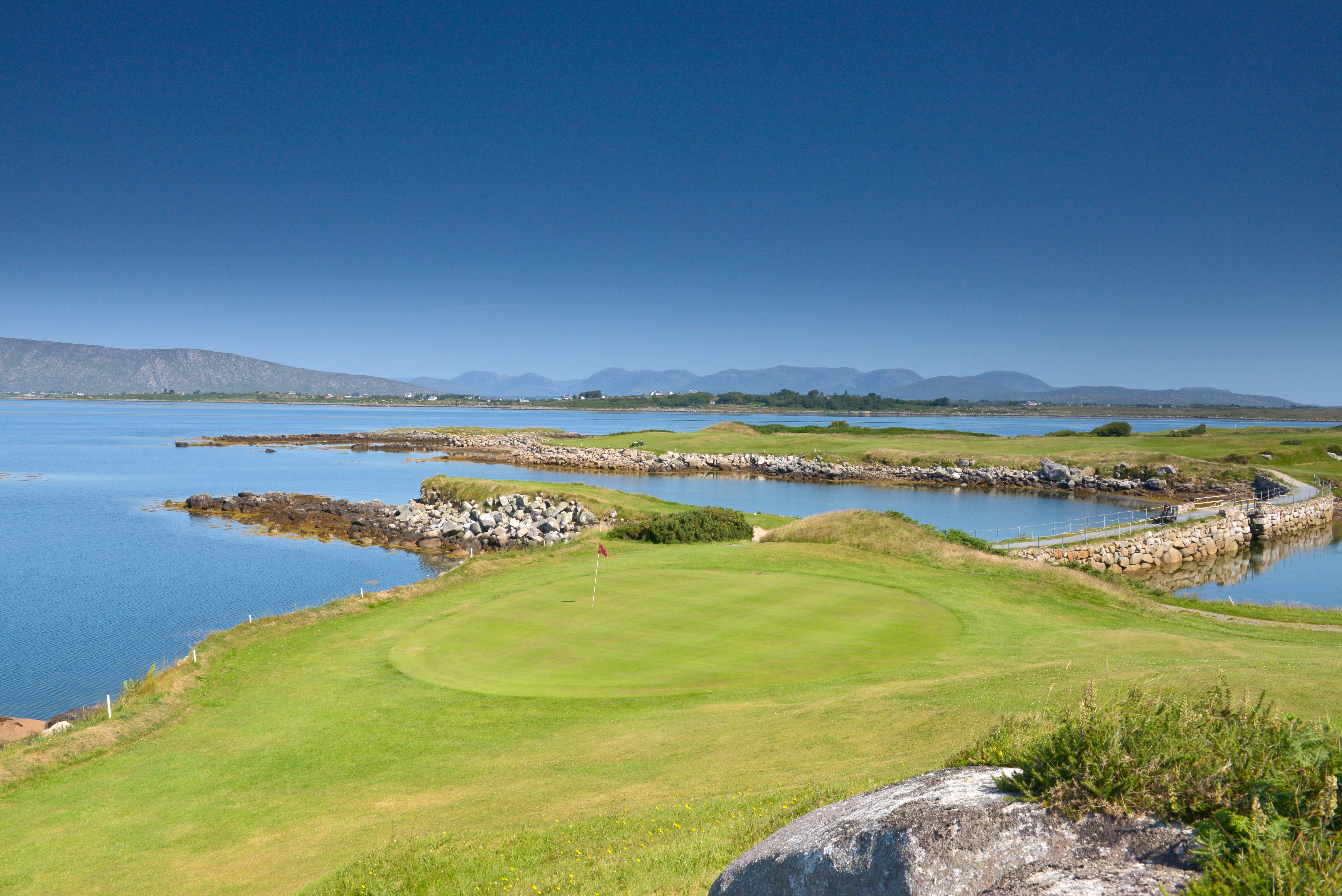
The intriguing little nine-holer at Connemara Isles
You may not find it fancy – not like Galway Bay – but this is solitude, wrapped in mountainscapes and beauty, with sea always close by. Three holes are located on an island – or six, if you decide to play 18.
County Mayo
It is fitting to move from one 9-hole gem to another, for Mulranny is a links course of old-school charm. Sheep patrol fairways – cattle, too – and greens are wrapped in barbed-wire.
Those greens have some remarkable putting surfaces, perhaps reflecting the grandeur around you. Clew Bay cosies up to the course – you’ll get a better view from atop Croagh Patrick, Ireland’s holiest mountain – and it is said that the bay is home to 365 islands, one for every day of the year. Westport Golf Club, to the south, also nestles up to Clew Bay, and is well-known for its scintillating back nine.
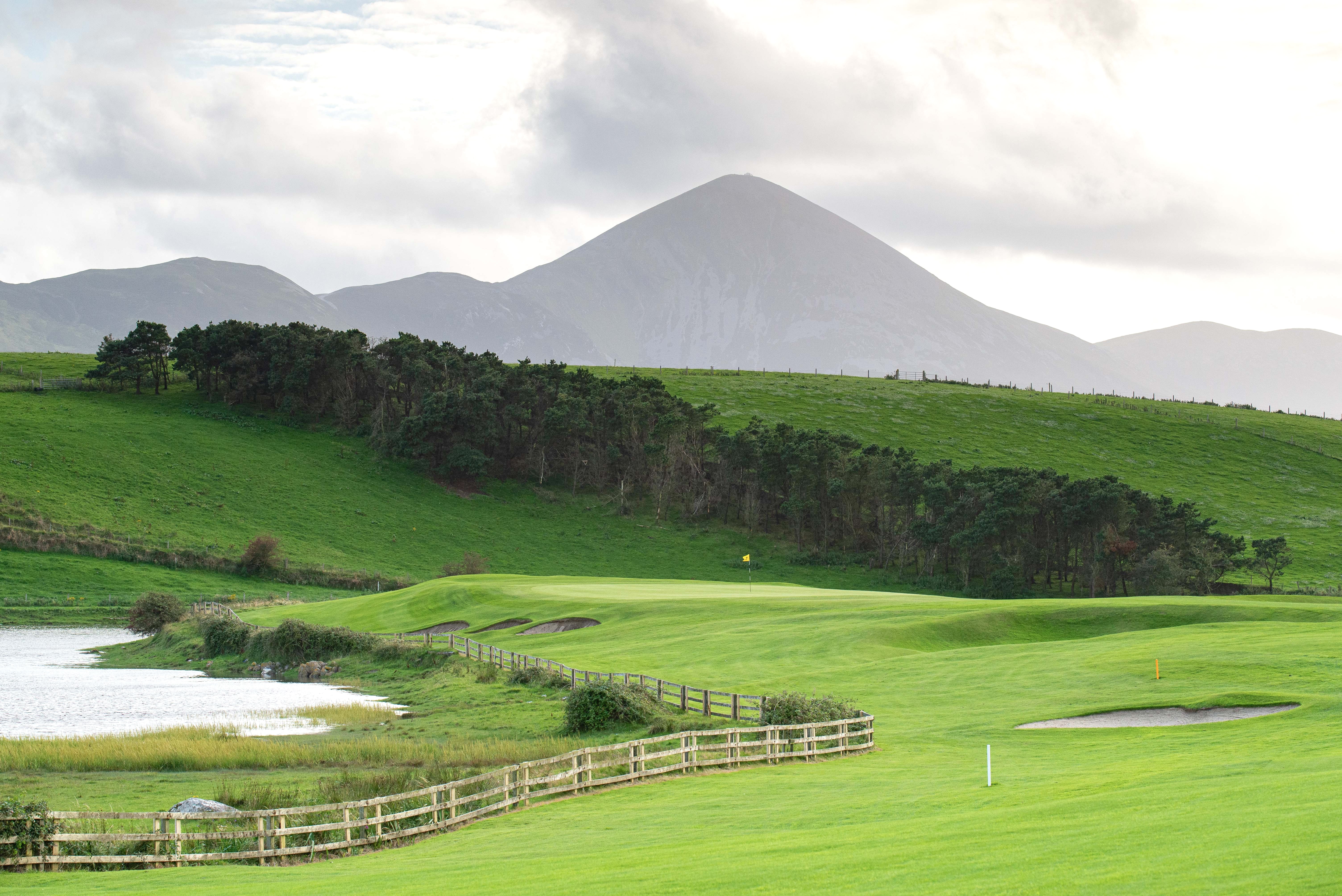
The 15th hole on Westport's renowned back nine
The drive beyond Mulranny is across wild countryside, one of lakes, mountains and forest, with barely a house in sight. The raw beauty lasts all the way to Belmullet, home to Carne, the world’s most dramatic links. And ‘raw’ aptly describes the scale and experience of this 27-hole masterpiece.
Golfers are dwarfed by the dunes and when you finally escape their clutches and find yourself next to the ocean, you can look west and know there is nothing between you and Newfoundland. Seconds later, the towering dunes draw you back in, like crashing waves leading you home.
County Sligo
The links courses of Galway, Mayo and Sligo are few in number – seven in all (versus Donegal’s 14) – but the three in Co. Sligo are something special, blessed with quality and quirk. Enniscrone cosies up to a famous beach, two miles long.
It was designed by Eddie Hackett, before Donald Steel (and Martin Ebert) added holes to create a sensational back nine. The dunes are almost as big as Carne’s, and Hackett’s 12th and 13th remain iconic, quirky holes that tease golfers with their blind tee shots and remarkable green sites.
The quirk and quality continue at Strandhill, a lesser-known links, with sea pressing hard on two sides. Should the mood take you, you can leave the course after seven holes, walk into the village and buy an ice cream at Mammy Johnston’s. You may well need the sugar-high to tackle the 364-yard 13th, the quirkiest hole in Ireland.
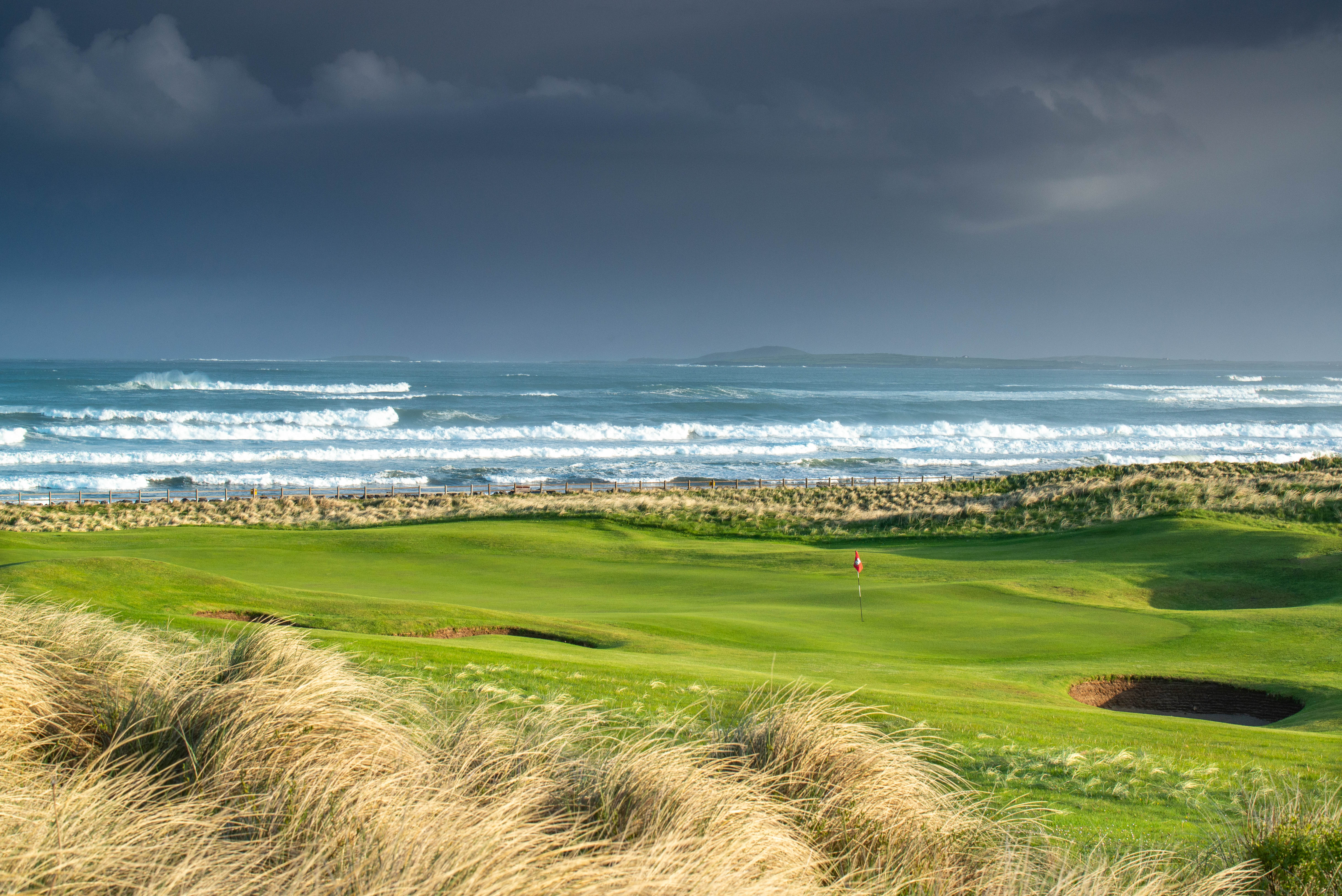
Strandhill is a fine links with one or two quirky moments
Across the bay from Strandhill is Co. Sligo Golf Club, designed by Harry Colt, and the undisputed grand dame of the region. The course is renowned for its par-3s, as well as its views, and you can combine the two with the table-top Benbulben Mountain looming behind the sweet 152-yard 9th.
County Donegal
Co. Donegal has the longest coastline in Ireland, measuring 583 miles. It is home to 19 courses with the recent addition of St Patrick’s Links, designed by Tom Doak, and the Gil Hanse-renovated Narin & Portnoo, adding serious weight to Donegal’s credentials as the ‘links county of Ireland’.
Narin & Portnoo lies 20 miles north of the Slieve League Cliffs, which rise out of the ocean. Narin & Portnoo has taken that to heart, for no other course takes you as close to the water as here. You can dip your toe from the 8th tee box. Nearby is Cruit Island, an expedition of winding roads that leads on and on.
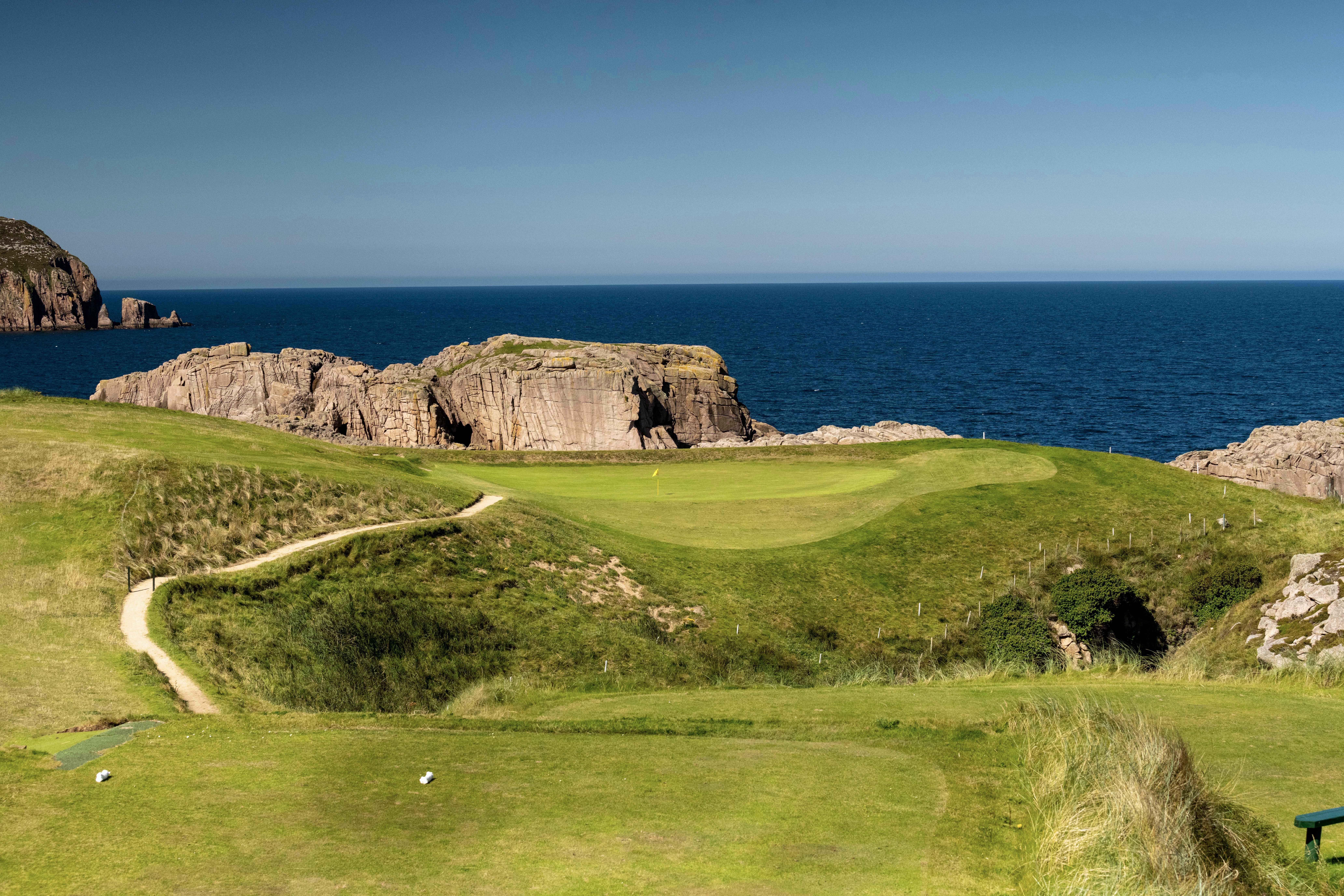
The extraordinary par-3 6th at Cruit Island
Cruit (pronounced ‘Critch’) is regarded as one of the best 9-hole courses in the world. Stroll over the fairway ridge on the 3rd and enjoy a Pebble Beach moment; stand on the par-3 6th tee and goosebumps rise. Your tee shot hits over deep, rocky inlets and sea, and the green floats above it all. It is a masterclass in golf terror.
The Inishowen Peninsula is the last leg of the Wild Atlantic Way – or the first, depending on your point of view – with the subtle guile of the links at North West countered by the muscle and majesty of Ballyliffin
.
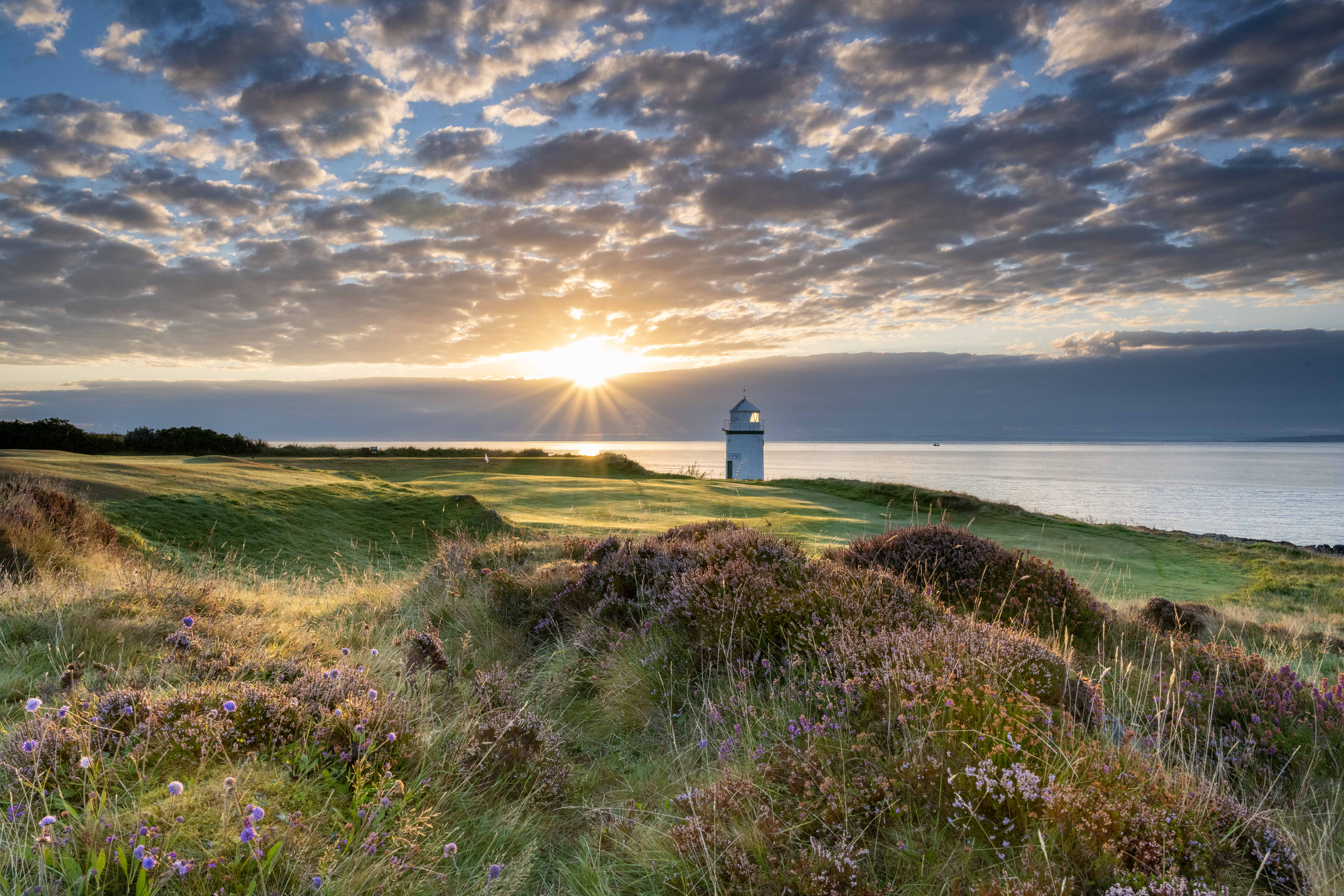
The 12th hole and lighthouse at Greencastle Golf Club
But the final 18-hole course on the route is the seaside parkland of Greencastle. It won’t draw the links hunters but it does have a 12th hole that drives over a beach, towards a lighthouse, with ocean brushing the rocks alongside. It is one final tug of the heartstrings that underlines the Wild Atlantic Way’s exceptional golf credentials.

Kevin Markham stepped into a campervan in 2007, and spent the next 14 months playing every 18-hole golf course in Ireland… 360 of them. He wrote two books on the back of those travels and has been working in the golf industry ever since, both as a freelance writer and a photographer. His love of golf courses has seen him playing extensively in Scotland, as well as across Europe. In total, he has played over 550 courses including most of Scotland’s top 100, and over half of Portugal’s growing number. He writes for the Irish Examiner newspaper, Irish Golfer magazine, and Destination Golf, and is a regular contributor to Golf Monthly. He has his own photography website – kevinmarkhamphotography.com – and spends hours on golf courses waiting to capture the perfect sunrise or sunset.
Kevin can be contacted via Twitter - @kevinmarkham
You must confirm your public display name before commenting
Please logout and then login again, you will then be prompted to enter your display name.
-
 LIV Golf Mexico City 2025 Picks, Odds And Predictions
LIV Golf Mexico City 2025 Picks, Odds And PredictionsCheck out the odds for the leading players at LIV Golf Mexico City as well as our favorite and outside picks for this week's tournament in Naucalpan
By Jonny Leighfield
-
 Ever Found These Hidden Nasties In Your Golf Bag? Why Post-Round Care Is Vital
Ever Found These Hidden Nasties In Your Golf Bag? Why Post-Round Care Is VitalIt is easy to put away your golf bag and forget about going through the pockets, leaving in items which will case problems later down the line...
By Roderick Easdale